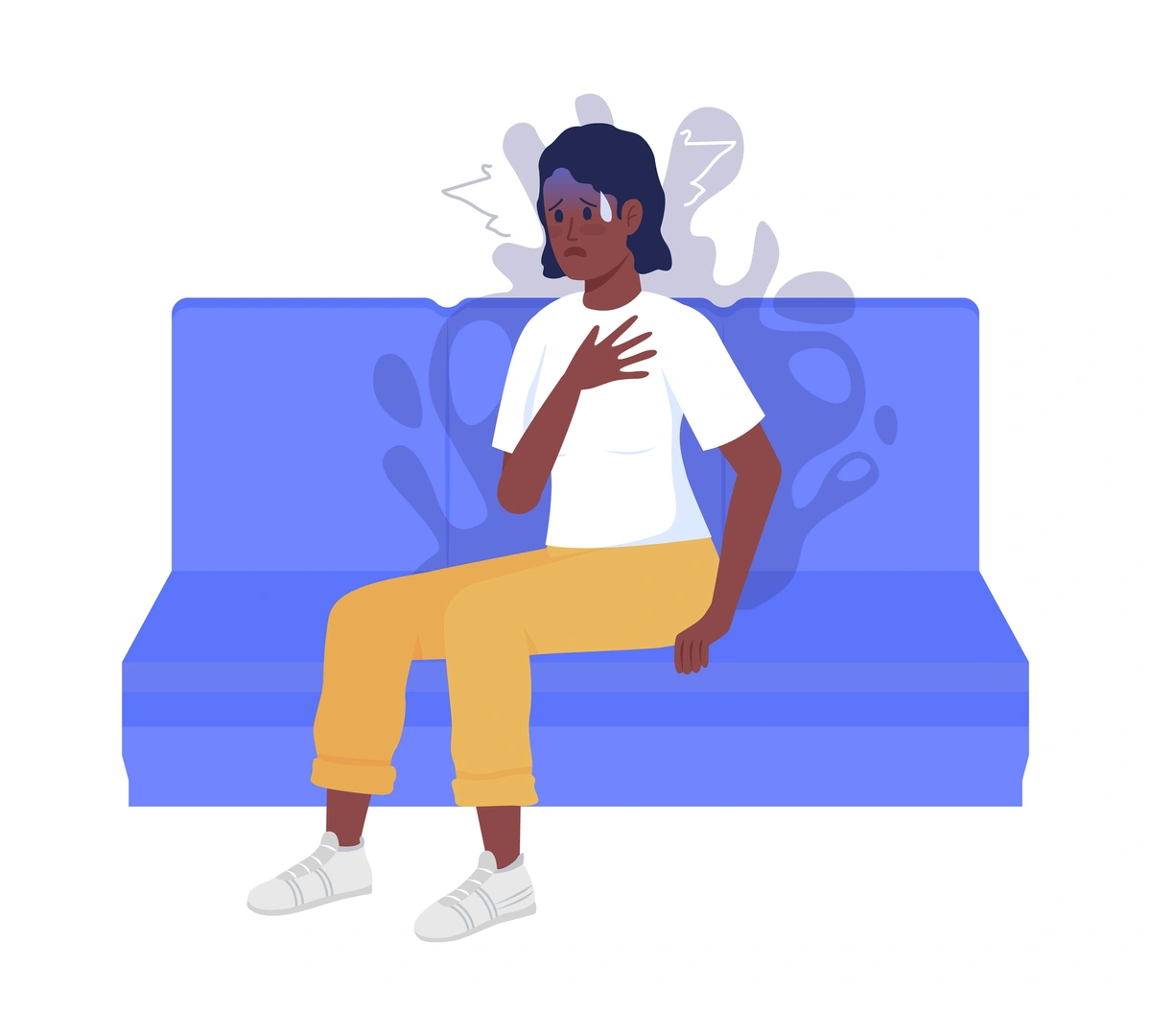Panic Disorder

Panic Disorder
Anxiety disorders are the most commonly diagnosed mental health condition in America. According to the National Institute of Mental Health (NIMH), 2.7 percent of the general population in the United States has panic disorder, although the incidence is higher in women (3.8 percent) than men (1.6 percent).
According to the NIMH, nearly half of people diagnosed with panic disorder (45 percent) have a serious impairment, while the rest are mildly or moderately impaired. Panic disorder is highly treatable in people of all ages, and all levels of severity. Panic disorder usually exists throughout a person’s life, with symptoms beginning in adolescence. For many, the symptoms may not have been acknowledged during childhood. As a result, many individuals with panic disorder are not diagnosed until they are adults. And, even for adults, the diagnosis can be overlooked without an in-depth assessment such as the one MindMetrix offers.
What it looks like
Panic disorder refers to a condition in which a person experiences recurring panic attacks, for no apparent external reason. For many individuals experiencing their first episode of a panic attack, the person believes that he or she is dying from a heart attack or stroke because they may have a racing heart, chest pain, and elevated blood pressure, as well as other symptoms.
A panic attack is an abrupt feeling of overwhelming fear that is accompanied by at least four physical symptoms, such as heart palpitations, sweating, tremors (shaking), difficulty breathing, chest and/or abdominal pain, dry mouth, choking, numbness, nausea, chills, shortness of breath, and elevated blood pressure and pulse. Most people say that their panic attacks usually (or always) appear “out of nowhere,” although some individuals learn to recognize signs that an attack is imminent, as when they become distressed or anxious about a situation or person.
Some people having a panic attack worry that they are losing their mental stability. Many fear that they are dying.
Other symptoms of panic disorder may include the following:
- Actively avoiding situations that the person believes may trigger a panic attack
- Constant anxiety and fear about a panic attack occurring
- A feeling that what is happening is not real, also known as “derealization”
- More than one unanticipated panic attack
Individuals with panic disorder have had to overcome challenges others have not. Many people can identify with fear associated with certain situations. For example, the fear of public speaking is extremely common. However, having a panic attack is an intense state of fear that is much more severe than the average person’s fearful episode. Having panic attacks, and worrying about when one might occur can be a lot of mental overhead, which can make it difficult to function optimally at times.
Untreated panic disorder
When left untreated, panic disorder can develop into agoraphobia, or intense fear & avoidance of certain places or situations. Some people with panic disorder and agoraphobia are so distressed by the fear of developing panic symptoms that they have extreme difficulty leaving their homes. People with panic disorder have a greater risk for suicidal behaviors than others, which is another reason why treatment is so important.
Outlook
While living with panic disorder can present unique obstacles, treatment can dramatically improve one’s quality of life. The majority of people who are properly diagnosed and treated with therapy and medications observe transformative results. In fact, people who have received treatment for their panic disorder often say that it is one of the best decisions they’ve ever made. With treatment, many people with panic disorder recover from this condition.
In good company
Many prominent people reportedly have panic disorder such as actress Emma Stone, singer/songwriter John Mayer, and TV personality and former Olympic athlete Caitlyn Jenner.
The current thinking on what causes panic disorder
Why do some people have panic disorder while others do not? No one knows for sure what causes panic disorder, but most experts believe that it is brain-based and largely driven by genetics: If a person in the family has panic disorder, the likelihood for other first degree relatives (parents, siblings, and children) also developing panic disorder increases.
The cause of specific panic attacks can vary: If an individual is facing an imminent threat i.e. a physical attack, it is appropriate for the body to react with elevated heart rate, sweating and hyper-alertness. A panic attack is triggered by a perceived threat, it is as if the body is overreacting to a mild or non-existent provocation.
Because of these physical symptoms, panic attacks can be very scary and painful to experience, and often result in visits to the Emergency Room.
Adults who have experienced childhood trauma, or "adverse childhood experiences" such as child abuse or neglect or parental substance abuse, also have an increased risk for panic disorder in adulthood.
Panic disorder & Agoraphobia
Panic disorder is sometimes accompanied by agoraphobia, which is another diagnosis which refers to the active avoidance of people, places, or situations that the person thinks may trigger a panic attack.